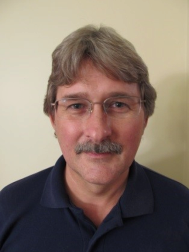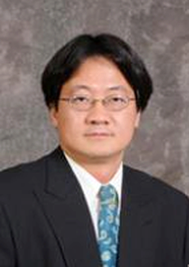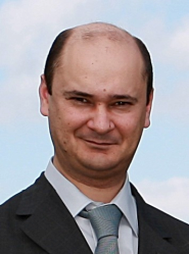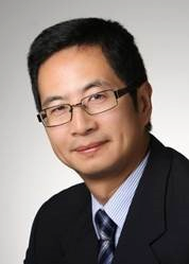Tutorials, in the form of half-day or full-day courses, will be held on May 13, 2018. Attendance to tutorials is open to everyone but conference registrants get a discount rate. Morning sessions are prefixed by "TAM" and afternoon sessions are prefixed by "TPM".
Presenters
- David HIEMSTRA, Senior Staff Engineer, Macdonald, Dettwiler and Associates (MDA) Co., Brampton, ON, Canada
- Li CHEN, Department of Electrical and Computer Engineering, University of Saskatchewan, Saskatoon, SK, Canada
Synopsis
The tutorial will be divided into 3 parts, the first part will introduce the space and terrestrial radiation environment, and the radiation effects in semiconductor devices. Some examples will be presented to the audience about radiation effects on complex microcircuits. The first part will be delivered by Mr. David Hiemstra, who has extensive industrial experiences in this area. The second part will discuss the approaches to model the radiation effects and some mitigation approaches. This part will be delivered by Dr. Chen, who has more than 10-year research experiences in this area. The last part will cover the radiation test techniques and overview of test facilities in Canada. This will include proton/neutron radiation facility in TRIUMF and the pulsed laser facility at University of Saskatchewan. This part will be introduced together by Mr. Hiemstra and Chen.
- Overview of the space and terrestrial radiation environment
- Describe the radiation effects observed in semiconductor devices
- Provide examples of radiation effects on complex microcircuits
- Describe modeling techniques for single event effects
- Describe examples and results of radiation hardened by design techniques
- Review of radiation effects test techniques
- An overview of Canadian facilities available for radiation effects testing
Bios
Dave HIEMSTRA
 David M. Hiemstra received his B. Eng. & Mgt. (1984) and M. Eng. (1993) degrees in Electrical and Biomedical Engineering, respectively from McMaster University. He is a Senior Member of the IEEE. David joined MacDonald, Dettwiler & Associates (MDA), formally Spar Aerospace, in 1984, where he is a Senior Staff Engineer. He is involved in radiation effects and embedded avionics hardening for space, nuclear, and military applications, systems engineering, advanced infrared and visible focal plane array technology, analog circuit design, and electromagnetic compatibility. His current area of research is Single Event Effects in commercial off-the-shelf, system on a chip, microelectronics.
David M. Hiemstra received his B. Eng. & Mgt. (1984) and M. Eng. (1993) degrees in Electrical and Biomedical Engineering, respectively from McMaster University. He is a Senior Member of the IEEE. David joined MacDonald, Dettwiler & Associates (MDA), formally Spar Aerospace, in 1984, where he is a Senior Staff Engineer. He is involved in radiation effects and embedded avionics hardening for space, nuclear, and military applications, systems engineering, advanced infrared and visible focal plane array technology, analog circuit design, and electromagnetic compatibility. His current area of research is Single Event Effects in commercial off-the-shelf, system on a chip, microelectronics.
David has taught space radiation effects on embedded avionics at York University and aerospace firms. He coordinated radiation effects test programs at the University of Toronto Institute for Aerospace Studies, University of Waterloo, and York University. He is currently collaborating with the University of Saskatchewan on the study of single event effects in programmable devices for space instrumentation.
David has been active with IEEE and NSREC, serving as Member-at-Large Radiation Effects Steering Group (2000-2003), Awards Committee (2002, 2005), Devices and Integrated Circuits Session Chairman (2000), Radiation Effects Data Workshop Chairman (2006), Local Arrangements Chairman (2009), voting member IEEE NPSS AdCom Radiation Effects (2013-2017) and as a reviewer on an ongoing basis. He has presented papers at every Nuclear and Space Radiation Effects Conference (NSREC) since 1995. David prepares a Guide to the Radiation Effects Data Workshop each year. The guide is available on the NSREC website. He has authored/co-authored more than 50 papers on radiation effects.
David is a Senior Member of IEEE, he is currently the technical lead for EXOMARS Actuator Drive Electronics and radiation effects consultant to Canadian Aerospace firms.
Li CHEN
 Li Chen received the B.S degree from Tianjin University, Tianjin, China in 1991, and M.Eng and Ph.D. degree from University of Alberta, Edmonton, Canada in 2000 and 2004, respectively. Dr. Chen has been the faculty member of the Department of Electrical and Computer Engineering, University of Saskatchewan since 2006, where he is endowed with the Barbhold Chair Professor in Information Technology. He was promoted to Associate Professor and Professor in 2011 and 2016, respectively. His research interests are in radiation- and fault-tolerant microelectronics, and low-power microelectronics. He has more than 100 publications in referred journals and conferences proceedings, and received the best paper award in 2015 IEEE Nuclear and Space Radiation Effects conference (NSREC). His research has been supported by a wide scope of funding agencies and industry, such as NSREC, CFI, NASA, ESA, Cisco, MDA, Microsemi, etc.
Li Chen received the B.S degree from Tianjin University, Tianjin, China in 1991, and M.Eng and Ph.D. degree from University of Alberta, Edmonton, Canada in 2000 and 2004, respectively. Dr. Chen has been the faculty member of the Department of Electrical and Computer Engineering, University of Saskatchewan since 2006, where he is endowed with the Barbhold Chair Professor in Information Technology. He was promoted to Associate Professor and Professor in 2011 and 2016, respectively. His research interests are in radiation- and fault-tolerant microelectronics, and low-power microelectronics. He has more than 100 publications in referred journals and conferences proceedings, and received the best paper award in 2015 IEEE Nuclear and Space Radiation Effects conference (NSREC). His research has been supported by a wide scope of funding agencies and industry, such as NSREC, CFI, NASA, ESA, Cisco, MDA, Microsemi, etc.
Prof. Chen and his research group have extensively studied radiation effects in digital and analog/mixed-signal integrated circuits for space and commercial ground-level applications, and have introduced cost-effective and novel mitigation techniques. The circuits include flip-flops, SRAMs, ARM and LEON microprocessors, Altera and Xilinx FGPAs, DC-DC converters, bandgap references, phase-locked loops, etc. His research group was the first one who extensively studied the radiation effects in 28nm FDSOI and bulk CMOS technologies. He has established a radiation effect research laboratory which includes a fento-second pulsed laser facility, alpha source, Co-60 sources, space-simulation chamber, and various simulation tools.
Dr. Chen has given tutorial sessions on radiation effects and mitigation techniques for several workshops. He delivered tutorial sessions on radiation effects at CIAE 2014, Shanghai 2015, CCECE2015, and Chengdu 2016 respectively. He also was invited to give talks about radiation effect by various institutions, such as ESA, Cisco Canada, and CMC Microsystems.
Presenter
- Abdel EL ABED, Ecole Normale Supérieure Paris Saclay & CentraleSupélec, France
Synopsis
Droplet-based microfluidics allows for the production and the manipulation of highly monodisperse microdroplets of fluids, with a high degree of control and reproducibility, each of which may be regarded as an independent microreactor: high throughput parallelization can be realized in the vessels that can be complemented by sophisticated analysis, or, the screening of a single compound can be performed at different concentrations and at ~ kHz rates. Microdroplets can be also solidified individually using suitable condensation or (photo)polymerization reactions to give rise to highly monodisperse solid of gel-like microspheres or microcapsules. We call such an approach Solidics, a contraction of the words ’solids’ and ’microfluidics’. The prospects offered hence by droplet-based microfluidics are numerous and concern many fundamental and industrial fields in biology, physics, chemistry, material science, etc. Many applications (mainly biomedical applications) have been developed during the last decade using microfluidic devices. For instance, microdroplets can be used as independent micro-compartments for the development of digital and rapid assays of single molecules or living cells, which are based on the limiting dilution of biological samples in micro-droplets and rely on the discrete counting of a given event, providing an absolute value and quantitative data. By segregating individual sequences of DNA and fluorescent biomarkers within separate compartments, these procedures allow for instance for identification of very rare genes sequences. Optofluidics is a contraction of optics and microfluidics. This is a fast growing research field which is dedicated to the study of the interaction of light with tiny volumes of liquids in microfluidic channels or cavities. Droplet-based optofluidics aims at manipulating light and confined fluids in micro-droplets and exploiting their interaction to create "digital" micro-systems with highly significant scientific and technological interests in many areas, from single-cell studies and genetic sequencing to photonics.
Microdroplets are generally stabilized by surfactants, which play a key role in the process of molecular exchange between droplets. The merging of selected droplets can be realized using an external high alternating current (AC) voltage and a pair of micro-electrodes, patterned generally inside of a so-called electro-coalescence microchambers. These methods are limited, however, to spatially isolated droplet pairs, as the long-range effect of the applied electric field has not the potential to differentiate between droplets. For the selective merging, the spacing and the periodicity between drops need to be precisely synchronized, which may become difficult for applications where many highly synchronized combinations are needed. We have shown recently that active merging of microdroplets can be realized by mean of a pulsed laser. This approach is particularly attractive since light provides flexibility and wavelength/intensity tunability and may be realized in high temporal and spatial resolution.
In the first part of my presentation, I will give a general introduction to microfluidics. Then, I will focus in the second part on droplet-based microfluidics and on some of the most relevant applications in biology using this approach. The last part of my presentation will be dedicated to topics we developed in my group at ENS Paris Saclay, using the digital microfluidic approach.
Outline:
- General introduction to microfluidics
- Droplet-based microfluidics
- Selected applications developed by the author
Bios
Abdel Illah EL ABED
 Abdel Illah El Abed, PhD, Associate Professor, holds a Master Sc. in "Polymers, Interfaces & Amorphous States" (Physics and Physical-Chemistry) from Languedoc University of Sciences and Technologies (Montpellier, France, 1988), a Ph.D. in Physics from Paris Descartes University on "Structure of Langmuir films of Pyramidic liquid crystals" (1992) and an Habilitation to Direct Research (HDR) from Paris Descartes University (2005). From 2011 to 2013, he was a researcher at UMR-S775, Translational Research and Microfluidics at Paris Descartes University; from 2010 to 2011, he held a CNRS fellowship at the Chemical Biology Laboratory, ISIS, Strasbourg. He is currently a Researcher at Ecole Normale Supérieure (ENS) Paris Sacaly, LPQM & Institut d’Alembert, and Associate Professor (Maître de Conférences, HDR, Hors Classe), Paris Descartes University.
Abdel Illah El Abed, PhD, Associate Professor, holds a Master Sc. in "Polymers, Interfaces & Amorphous States" (Physics and Physical-Chemistry) from Languedoc University of Sciences and Technologies (Montpellier, France, 1988), a Ph.D. in Physics from Paris Descartes University on "Structure of Langmuir films of Pyramidic liquid crystals" (1992) and an Habilitation to Direct Research (HDR) from Paris Descartes University (2005). From 2011 to 2013, he was a researcher at UMR-S775, Translational Research and Microfluidics at Paris Descartes University; from 2010 to 2011, he held a CNRS fellowship at the Chemical Biology Laboratory, ISIS, Strasbourg. He is currently a Researcher at Ecole Normale Supérieure (ENS) Paris Sacaly, LPQM & Institut d’Alembert, and Associate Professor (Maître de Conférences, HDR, Hors Classe), Paris Descartes University.
Presenter
- Moulay AKHLOUFI, Moncton University, Moncton, NB, CANADA
Synopsis
Deep learning is an area of artificial intelligence and machine learning that has known tremendous success in recent years. Deep neural networks have been successful in solving challenging real-life problems that were impossible to solve before. Deep learning is an active area of research and an effective way to solve many industrial problems, with applications in almost all the areas of science, engineering, mathematics, biology, medicine, etc.
This tutorial is an introduction to this exciting field. We introduce some basic deep learning concepts, explain the advantage of using these type of architectures, show some of their applications, and talk about good practices in designing deep neural networks. Following the lecture, hands-on training is given on some of the latest techniques for designing, training, and deploying deep neural networks. Through the hands-on labs, some important concepts related to the use of deep learning in classification and object detection are discussed. Optimizations and deployment are also explored in the last lab.
Students will explore some open-source frameworks such as Caffe, and will use cloud based platforms to design, program, and optimize for deployment some known deep neural networks (access to cloud based platforms is provided in partnership with NVIDIA Deep Learning Institute and is free of charge for students attending this tutorial. Registration is necessary to reserve a laboratory seat).
Bio
Moulay AKHLOUFI
 Moulay Akhloufi is Assistant Professor of Computer Science, Université de Moncton, NB, Canada and head of the Perception, Robotics, and Intelligent Machines research group. He received an MScA in Electrical Engineering in 1999 from Ecole Polytechnique de Montréal, QC, Canada, an MA in e-Business in 2006 from Université Laval, and a PhD in electrical Engineering from Université Laval in 2013.
Moulay Akhloufi is Assistant Professor of Computer Science, Université de Moncton, NB, Canada and head of the Perception, Robotics, and Intelligent Machines research group. He received an MScA in Electrical Engineering in 1999 from Ecole Polytechnique de Montréal, QC, Canada, an MA in e-Business in 2006 from Université Laval, and a PhD in electrical Engineering from Université Laval in 2013.
Presenter
- F. Richard YU, Carleton University, Ottawa, ON, CANADA
Synopsis
Recent advances in information and communications technology (ICT) have fueled a plethora of innovations in various areas, including networking, caching, and computing, all of which have profound impacts on the development of future generation wireless networks. In the area of networking, software-defined networking (SDN) and network function virtualization (NFV) have attracted tremendous interests in both academia and industry. In-network caching is another promising technology that can efficiently reduce access delays, traffic loads, and network costs. Moreover, recent advances in computing (e.g., cloud/fog/edge computing) will also have significant impacts on future wireless networks. Particularly, mobile edge computing has been proposed to deploy computing resources closer to mobile devices, which can efficiently improve the performance for applications requiring resource-intensive computations and low latency.
While some work has been done on networking, caching and computing for future wireless networks, these three important enabling technologies have traditionally been studied separately in the existing works. However, an integrated framework for networking, caching and computing has the potential to significantly improve the end-to-end performance of applications. Nevertheless, several significant research challenges remain to be addressed before the widespread deployment of an integrated framework for networking, caching and computing to become practical.
In this tutorial, we will present network architectures and protocols, virtual resources management and orchestrations, and cross-layer designs in the integrated framework for networking, caching and computing in future wireless networks.
Bio
F. Richard YU
 Richard Yu (S’00-M’04-SM’08-F’18) received the PhD degree in electrical engineering from the University of British Columbia (UBC) in 2003. From 2002 to 2006, he was with Ericsson (in Lund, Sweden) and a start-up in California, USA. He joined Carleton University in 2007, where he is currently a Professor. He received the IEEE Outstanding Service Award in 2016, IEEE Outstanding Leadership Award in 2013, Carleton Research Achievement Award in 2012, the Ontario Early Researcher Award (formerly Premiers Research Excellence Award) in 2011, the Excellent Contribution Award at IEEE/IFIP TrustCom 2010, the Leadership Opportunity Fund Award from Canada Foundation of Innovation in 2009 and the Best Paper Awards at IEEE VTC 2017 Spring, ICC 2014, Globecom 2012, IEEE/IFIP TrustCom 2009 and Int'l Conference on Networking 2005. His research interests include cross-layer/cross-system design, connected vehicles, security, and green ICT.
Richard Yu (S’00-M’04-SM’08-F’18) received the PhD degree in electrical engineering from the University of British Columbia (UBC) in 2003. From 2002 to 2006, he was with Ericsson (in Lund, Sweden) and a start-up in California, USA. He joined Carleton University in 2007, where he is currently a Professor. He received the IEEE Outstanding Service Award in 2016, IEEE Outstanding Leadership Award in 2013, Carleton Research Achievement Award in 2012, the Ontario Early Researcher Award (formerly Premiers Research Excellence Award) in 2011, the Excellent Contribution Award at IEEE/IFIP TrustCom 2010, the Leadership Opportunity Fund Award from Canada Foundation of Innovation in 2009 and the Best Paper Awards at IEEE VTC 2017 Spring, ICC 2014, Globecom 2012, IEEE/IFIP TrustCom 2009 and Int'l Conference on Networking 2005. His research interests include cross-layer/cross-system design, connected vehicles, security, and green ICT.
He serves on the editorial boards of several journals, including Co-Editor-in-Chief for Ad Hoc & Sensor Wireless Networks, Lead Series Editor for IEEE Transactions on Vehicular Technology, IEEE Transactions on Green Communications and Networking, and IEEE Communications Surveys & Tutorials. He has served as the Technical Program Committee (TPC) Co-Chair of numerous conferences. Dr. Yu is a registered Professional Engineer in the province of Ontario, Canada, a Fellow of the Institution of Engineering and Technology (IET), and a Fellow of the IEEE. He is a Distinguished Lecturer, the Vice President – Membership, and an elected member of the Board of Governors (BoG) of the IEEE Vehicular Technology Society.
Presenter
- Moulay AKHLOUFI, Moncton University, Moncton, NB CANADA
Synopsis
Deep learning is an area of artificial intelligence and machine learning that has known tremendous success in recent years. Deep neural networks have been successful in solving challenging real-life problems that were impossible to solve before. Deep learning is an active area of research and an effective way to solve many industrial problems, with applications in almost all the areas of science, engineering, mathematics, biology, medicine, etc.
This tutorial is an introduction to this exciting field. We introduce some basic deep learning concepts, explain the advantage of using these type of architectures, show some of their applications, and talk about good practices in designing deep neural networks. Following the lecture, hands-on training is given on some of the latest techniques for designing, training, and deploying deep neural networks. Through the hands-on labs, some important concepts related to the use of deep learning in classification and object detection are discussed. Optimizations and deployment are also explored in the last lab.
Students will explore some open-source frameworks such as Caffe, and will use cloud based platforms to design, program, and optimize for deployment some known deep neural networks (access to cloud based platforms is provided in partnership with NVIDIA Deep Learning Institute and is free of charge for students attending this tutorial. Registration is necessary to reserve a laboratory seat).
Bio
Moulay AKHLOUFI
 Moulay Akhloufi is Assistant Professor of Computer Science, Université de Moncton, NB, Canada and head of the Perception, Robotics, and Intelligent Machines research group. He received an MScA in Electrical Engineering in 1999 from Ecole Polytechnique de Montréal, QC, Canada, an MA in e-Business in 2006 from Université Laval, and a PhD in electrical Engineering from Université Laval in 2013.
Moulay Akhloufi is Assistant Professor of Computer Science, Université de Moncton, NB, Canada and head of the Perception, Robotics, and Intelligent Machines research group. He received an MScA in Electrical Engineering in 1999 from Ecole Polytechnique de Montréal, QC, Canada, an MA in e-Business in 2006 from Université Laval, and a PhD in electrical Engineering from Université Laval in 2013.

